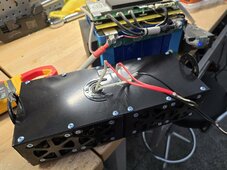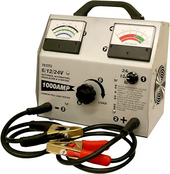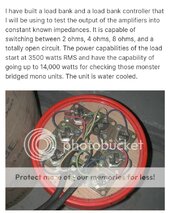Trying to find some 1000W resistors for 12V test loads, but having a tough time! Speciality resistors are not cheap..
I also purchased an 800W 12V car defroster, and it only pulled 300W:

I want to create a 300-600A load. Purely resistive.
I could buy a 10kW inverter, and then hook up a ton of light bulbs. But obviously that's not purely resistive.
There has to be an easier way!
Some 12V batteries claim they can pull 300A for 5 seconds. Others 200A for 20 seconds etc. just need a large simple load for these tests.
What would you guys do?
I also purchased an 800W 12V car defroster, and it only pulled 300W:

I want to create a 300-600A load. Purely resistive.
I could buy a 10kW inverter, and then hook up a ton of light bulbs. But obviously that's not purely resistive.
There has to be an easier way!
Some 12V batteries claim they can pull 300A for 5 seconds. Others 200A for 20 seconds etc. just need a large simple load for these tests.
What would you guys do?







